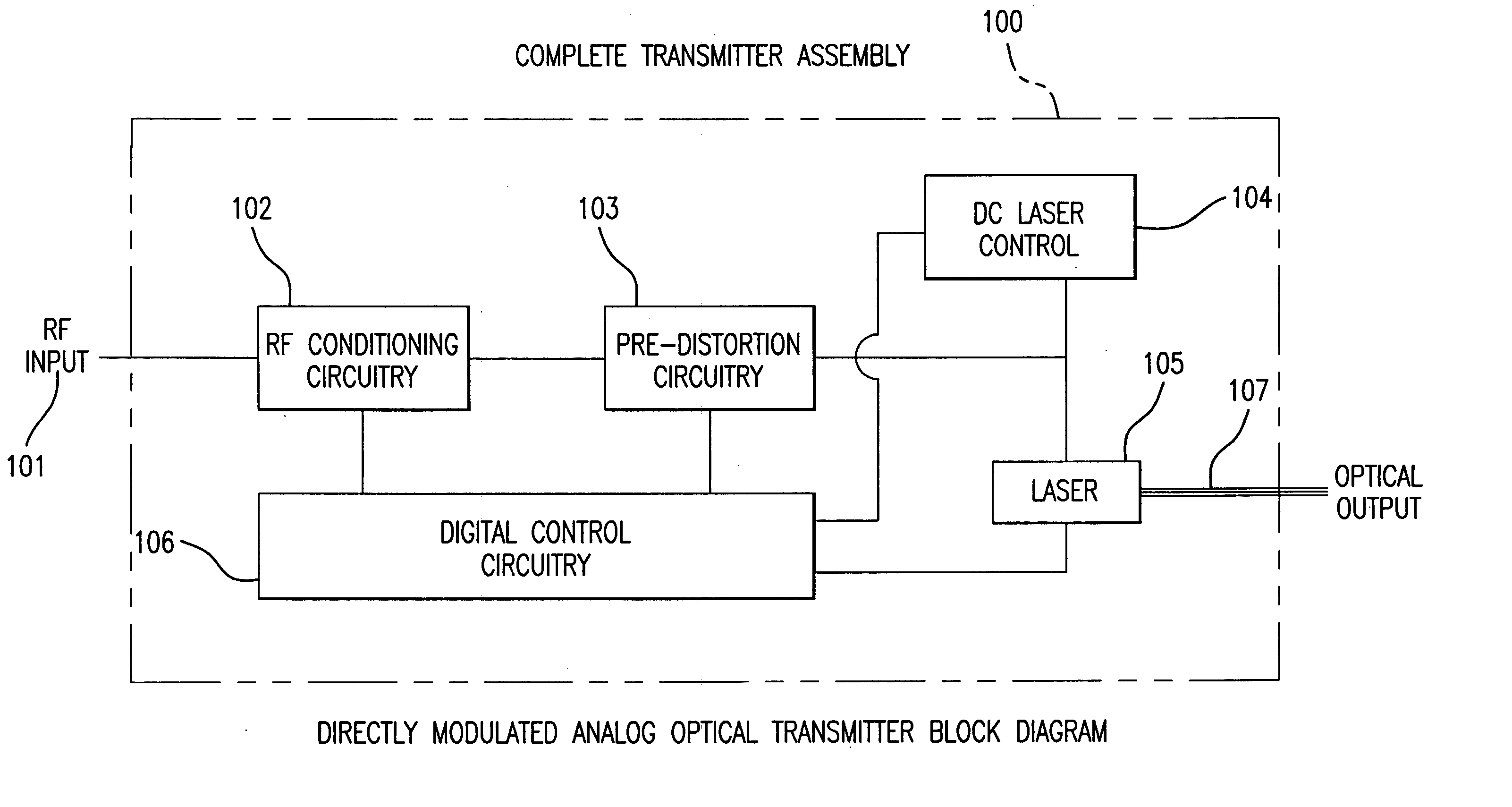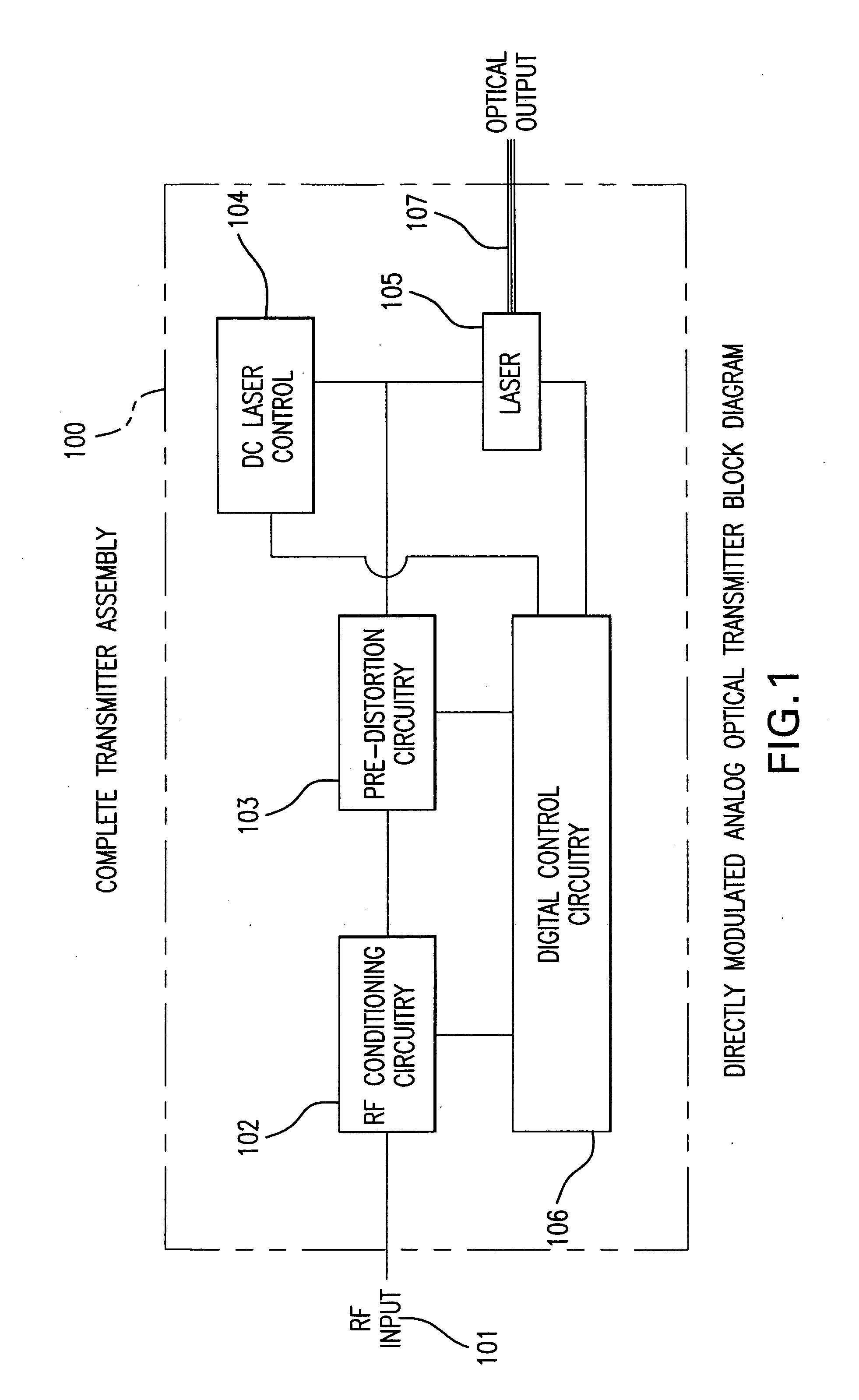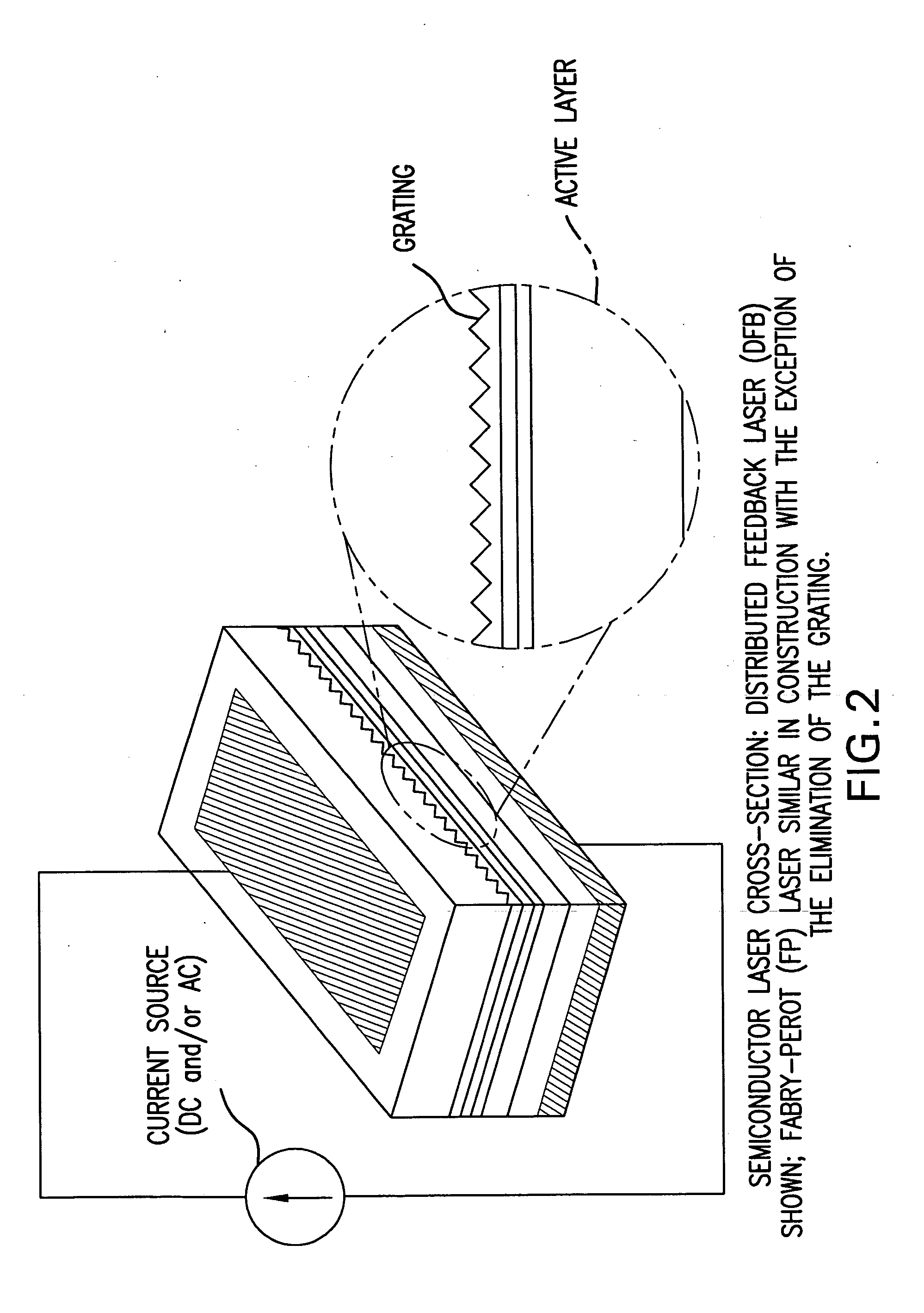Directly modulated laser optical transmission system
a laser optical transmission and modulation technology, applied in the direction of electromagnetic transmission, electromagnetic transceivers, semiconductor lasers, etc., can solve the problems of the use of amplitude modulation may suffer from the noise and nonlinearity of the optical source, and the external modulation techniques are complex and expensive, etc., to achieve the effect of reducing the frequency independent component of the distortion, reducing the distortion of the signal, and reducing the product of the second and higher
- Summary
- Abstract
- Description
- Claims
- Application Information
AI Technical Summary
Benefits of technology
Problems solved by technology
Method used
Image
Examples
Embodiment Construction
[0042] Details of the present invention will now be described, including exemplary aspects and embodiments thereof. Referring to the drawings and the following description, like reference numbers are used to identify like or functionally similar elements, and are intended to illustrate major features of exemplary embodiments in a highly simplified diagrammatic manner. Moreover, the drawings are not intended to depict every feature of actual embodiments nor the relative dimensions of the depicted elements, and are not drawn to scale.
[0043]FIG. 1 is a highly simplified block diagram of the optical transmission system 100 according to the present invention. There is shown an analog RF signal input source 101, such as a broadband signal including a plurality of distinct information-containing communications signals or channels. The RF input is applied to RF conditioning circuitry 102 that performs . . . . The output of the RF conditioning circuitry 102 is applied to a pre-distortion ci...
PUM
 Login to View More
Login to View More Abstract
Description
Claims
Application Information
 Login to View More
Login to View More - R&D
- Intellectual Property
- Life Sciences
- Materials
- Tech Scout
- Unparalleled Data Quality
- Higher Quality Content
- 60% Fewer Hallucinations
Browse by: Latest US Patents, China's latest patents, Technical Efficacy Thesaurus, Application Domain, Technology Topic, Popular Technical Reports.
© 2025 PatSnap. All rights reserved.Legal|Privacy policy|Modern Slavery Act Transparency Statement|Sitemap|About US| Contact US: help@patsnap.com



